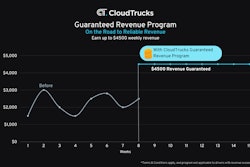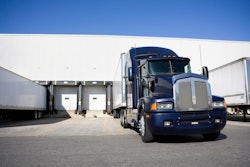Today’s trucking firms still feel ripple effects from this decade’s supply chain struggles and other industry-wide challenges. However, for many, an enormous obstacle to healthy growth and predictable cash flow lies within their corporate walls: their accounts payable (AP) processes. Paper-based, manual invoice processing leads to late payments and fees, duplicate payments, and lost invoices (and thus completely missed payments). These cause increasing frustration for the carrier’s vendors, suppliers and drivers, not to mention those monitoring the company’s cash flow.
Imagine a seemingly thriving trucking company in the Midwest— let’s call it Trucking Logistics Co. (or TLC) — with nearly 100 trucks delivering goods across the country. Beneath the successful surface, TLC’s overworked accounting staff struggles day in and day out with paper invoices and data entry, only to face a growing backlog of unprocessed payments. Despite its best efforts, the payables team simply can’t keep up with the current volume of invoices, much less scale to meet the growth projections of the board.
To make things worse, one of its major providers of truck parts and service — having experienced repeated late payments and lost invoices — threatens to halt deliveries unless the fleet operator gets its payment processing in order. At the same time, drivers start grumbling loudly about delayed reimbursements for their on-road expenses. Sour relations with critical suppliers, drivers, or any other necessary service provider aren’t what shippers want to see when choosing a new trucking company. Through no fault of its staff, Trucking Logistics’ AP processes were jeopardizing its operations and future growth.
On the bright side, carefully selecting and implementing digital technologies to automate AP processes can help fleet operators regain the trust of their suppliers and drivers. Even more, they’ll be equipped to better manage expenses, payables and cash flow, detect and correct inconsistencies, and — most importantly — get all those invoices paid accurately and automatically.
Why manual accounts payable is so crushing
Even a moderately sized trucking fleet operator like Trucking Logistics incurs hundreds of invoices per month and thousands each year. These cover a variety of expenses related to the operation and maintenance of their fleet, employee expenses, and administrative costs.
For example, fuel is one of the largest expenses for trucking companies, with the frequency and number of invoices varying based on fuel prices, routes, and the number of trucks in the fleet. In addition, any fleet requires regular maintenance (like oil changes and tire rotations) as well as unexpected repairs, which can be irregular but quite costly. To round out this trio, invoices related to payroll and training — including salaries, wages, benefits, training programs and certification renewals for drivers and other staff — are some of the largest, most frequent invoices received and processed by AP.
Other expenses, more periodic but just as operationally critical, add to the mountain of invoices to be processed. These include invoices for lease and loan payments, insurance, permits and licenses, toll charges, logistics and freight handling, marketing and advertising, and ongoing administrative, legal and other professional fees, just to name a few. It’s not hard to see why handling such volumes manually is a crushing burden for a carrier’s AP team — a recipe for mistakes, lost invoices, late payments, and in the end, poor cash flow management.
A technological wake-up call
A recent survey our company commissioned rated various industries according to their perceived level of technology adoption, and logistics and trucking was one of the top three. Using digital technologies to automate receipt, verification and timely payment of invoices is critical for the financial health of the trucking company, especially one that is growing. Those that aren’t automating are disadvantaging themselves. Here’s why.
Going paperless to streamline accounting operations at scale
To get started, a fleet operator must first assess its current AP processes, identifying pain points such as delayed payments, lost invoices, and excessive paper handling. The next step is to explore AP automation solutions that can handle the volume and complexity of their operations, one that altogether eliminates paper invoices. Select a system that is robust and reliable but also user-friendly to facilitate adoption by the staff. If it can successfully handle the vast majority of invoices, the system will quickly gain their confidence — they won’t miss paper at all! And the operator will realize almost immediately a host of benefits.
Automation drastically reduces the time spent on manual data entry and processing, resulting in greater efficiency and time savings. Automated systems can quickly capture, match, and process invoices, accelerating the AP workflow, and leading to quicker payment cycles and reduced workload for the accounting staff.
Automated, paperless AP processing minimizes human errors such as duplicate payments or incorrect data entry, ensuring more accurate financial records and reporting. In addition, the operator sees an immediate reduction in the costs over paper-based systems, such as printing, mailing, and storage.
Perhaps one of the greatest boosts in efficiency from going paperless is scalability. Given that most AP staff are already stretched thin, automated systems can handle increased volumes of invoices as the company grows, without the need for proportional increases in staff.
Increasing transparency and accountability
I already mentioned that automated AP systems can improve the accuracy of financial reporting, but there is more to the picture. Automated systems can provide real-time tracking and visibility into the status of invoices and payments. This enhances the ability to track and manage cash flow and known financial commitments.
Unlike manual processing, automated systems can create detailed logs of every transaction, including who approved what and when without relying on manual entry of such records. This makes it easier to audit and ensures compliance with internal policies and external regulations from various government agencies.
Finally, with digital data, freight operators can leverage analytics to uncover trends, optimize spending, and make more informed financial decisions. For example, knowing which areas will need more trucks and drivers over the next financial quarters.
Improving (and restoring) vendor and driver relations
You’ll remember the dire situation in which our hypothetical Trucking Logistics firm found itself when a key parts supplier paused its shipments — too many late (or lost) payments. (The delays and errors in processing on-road expense invoices also irritated the carrier’s drivers.) Any growing trucking firm knows what losing its partners’ trust can do to operations.
Automating AP processes can rapidly mend such tensions and make sure they don’t recur. Automation accelerates invoice processing, leading to faster, timelier payments that vendors and drivers know they can count on. Increased visibility provides a clear view of when payments are due to each vendor, allowing companies to take advantage of early pay discounts — or to hold the cash until the payment is due (while also avoiding any late fees). And because automation is far more accurate than manual entry and processing, it reduces errors in invoicing and payments and, therefore, the number of invoice disputes.
Finally, an automated AP processing system can ensure simpler and more consistent communication with a firm’s suppliers and drivers. Many such systems include portals to allow providers to submit invoices, track the status of payments, and update their information. They can also proactively send notifications and reminders, keeping vendors informed about the status of their invoices and payments.
All these aspects of automated invoice processing provide transparency, improve communication, and maintain a high level of trust, which leads to a smoother relationship with suppliers.
Automated accounting processes and a brighter road ahead
While accounting may seem “the final frontier” to which firms apply automation, these technologies are becoming more widely adopted. They aren’t without precedent in areas of the trucking industry adjacent to fleet operators. Take the world of vehicle dealerships, for example — sales, parts and services — including those that provide these goods and services for trucking companies. Such providers enjoy seamless integration of their AP automation with their dealership management systems. Such integrations make adopting AP automation attractive across the entire trucking industry, not just pieces of it.
In summary, fleet operators like TLC can achieve a more efficient, transparent, and reliable accounting process by implementing paperless, automated AP processing. This not only benefits the internal financial management of the company but also strengthens its relationships with vendors. The results will transform fragile manual AP functions into an engine for smoother, more sustainable business operations and growth.













